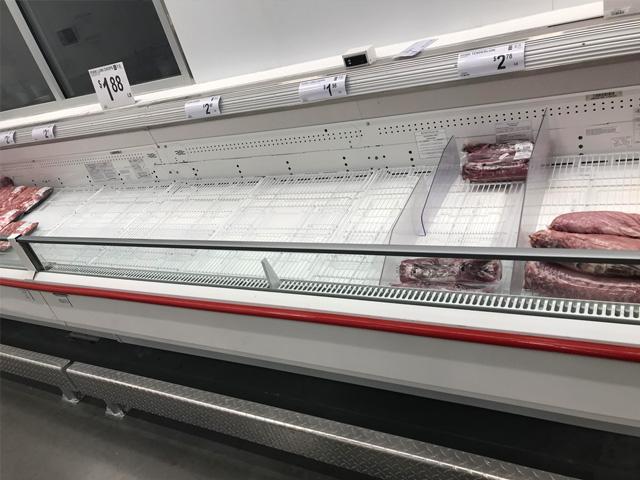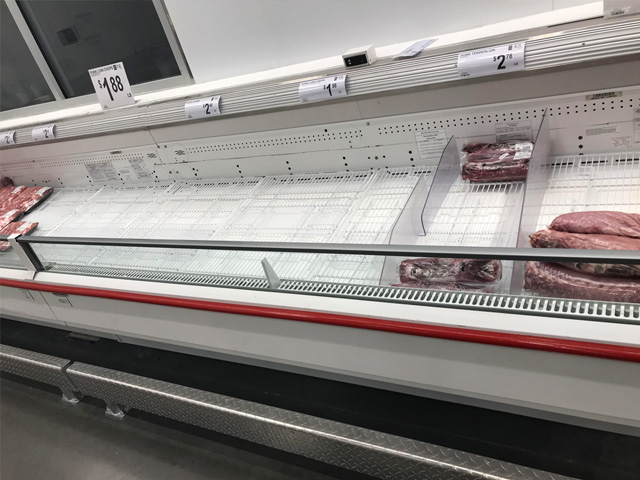Sort & Cull
Wholesale Beef Prices Still Disconnected From Industry
Although light support has slowly developed in the cash and futures cattle markets and beef cutout values have eroded from historic highs, a huge gap remains in market direction, driven by boxed beef prices.
During the past month, the focus in the cattle market has been specifically centered on wholesale beef values and the concern that reduced packing plant production would limit the availability of product to the consumer. Historically, boxed beef price moves have been a significant factor in cattle futures and feeder cattle prices, as those markets have typically moved in a tightly correlated pattern (see chart moves from May 2018 until February 2020). However, with focus on the coronavirus' impact on packing plant workers and the shutting of several plants, this relationship was broken, and remains broken. Although current boxed beef prices have quickly fallen from highs set last week and tumbled $66 per cwt in a matter of one week, the bulk of the $252-per-cwt rally remains in place, leaving in place concerns surrounding market direction through the wholesale beef market over the coming weeks.
P[L1] D[0x0] M[300x250] OOP[F] ADUNIT[] T[]
The general principle of the meat market is that wholesale beef values will help lead retail prices higher and lower. When this happens, all four markets (cash cattle, live cattle futures, boxed beef and retail beef) move in a similar pattern, and the close-knit relationship between the segments continues. The challenge over the last couple of months is that there is no daily weekly price gauge for retail beef price movements, leaving all of the focus on cash cattle, futures and boxed beef markets to assume a normal market relationship. It has been extremely clear just how broken this relationship has been over the last month, with all parties in the beef and meat industry focusing the blame on the other segments.
In order to get a good indication of the entire market, one has to look beyond wholesale prices to the direction and moves in the retail marketplace. This is essentially where the rubber hits the road. If consumer prices are not able to keep up with the rest of the market, product will not continue to move. In a perfect world, retail prices would be gathered daily, or even weekly, but the best indication of overall wholesale beef values is released in a monthly retail price report. As of May 1, the general average retail price for beef increased $26.12 per cwt from April 1, which is a 4% rally through the month.
The discrepancy between the wholesale beef market continues to be even more obvious, with choice boxed beef cuts surging $124 per cwt, accounting to a 51% rally. The rally in boxed beef prices continued through early May with another $108 per cwt added to the complex before peaking last week. This surge in boxed beef prices has added some moderate support to retail prices, but the price moves at the retail level have not kept pace with the moves in wholesale markets. This is one of the main reasons for wholesale boxed beef prices to tumble as quickly as possible because the stability of that market and inability to carry these elevated prices forward has quickly caught up to the market.
The retail price market likely remains more price-sensitive than any other sector of the market at this point. With meat shortages still seen and a "state of emergency" declared across the entire country, the potential to show elevated price levels in order to adjust to recent boxed beef movements may be more complicated than most realize. This could leave markets disconnected through the coming weeks, as the price relationship with wholesale and retail beef prices is still unable to align. But, eventually, wholesale beef prices are expected to fall back to more realistic patterns as increased meat product moves through packing plants, onto store shelves and into restaurant coolers.
Rick Kment can be reached at rick.kment@dtn.com
© (c) Copyright 2020 DTN, LLC. All rights reserved.





Comments
To comment, please Log In or Join our Community .